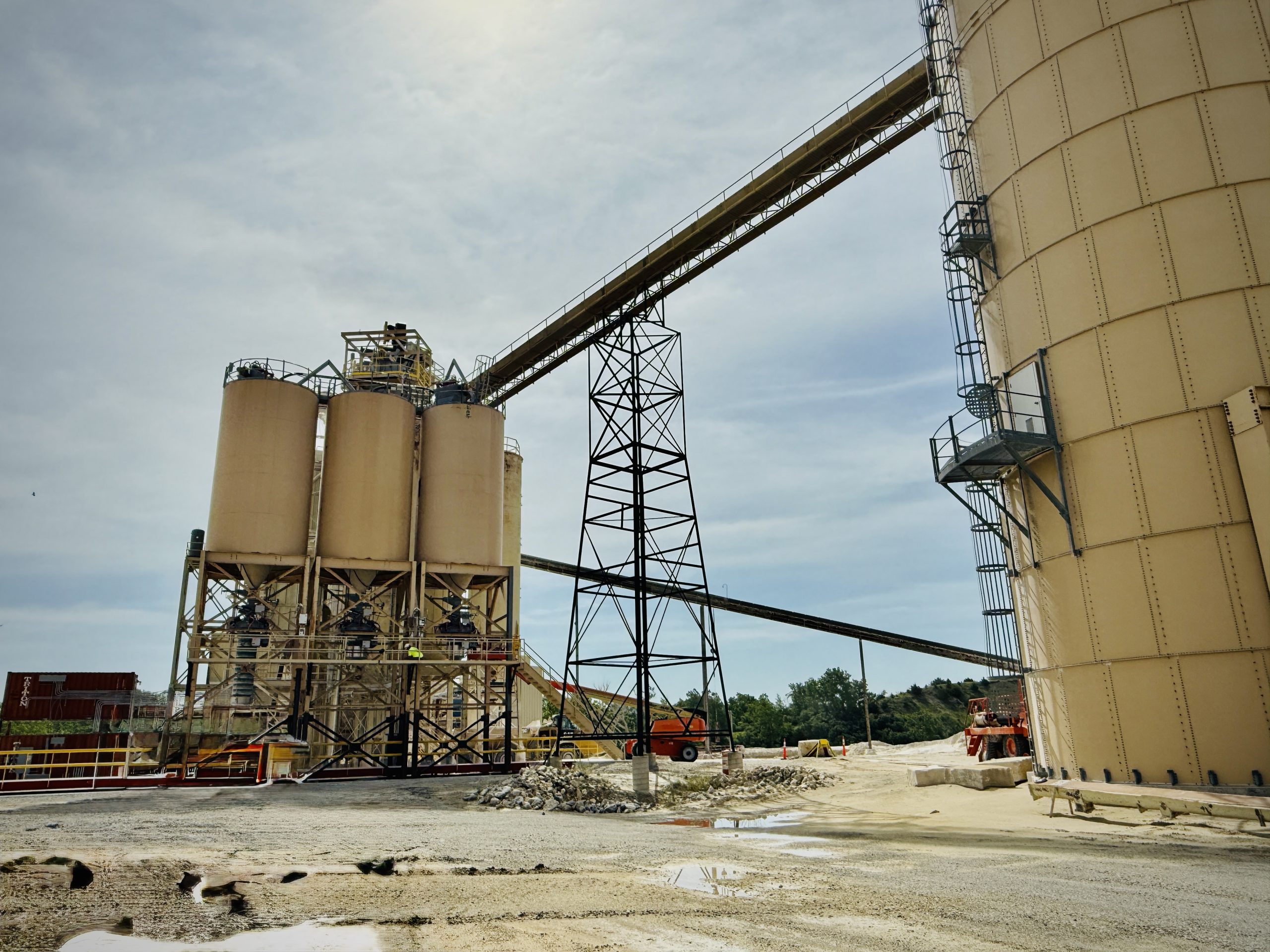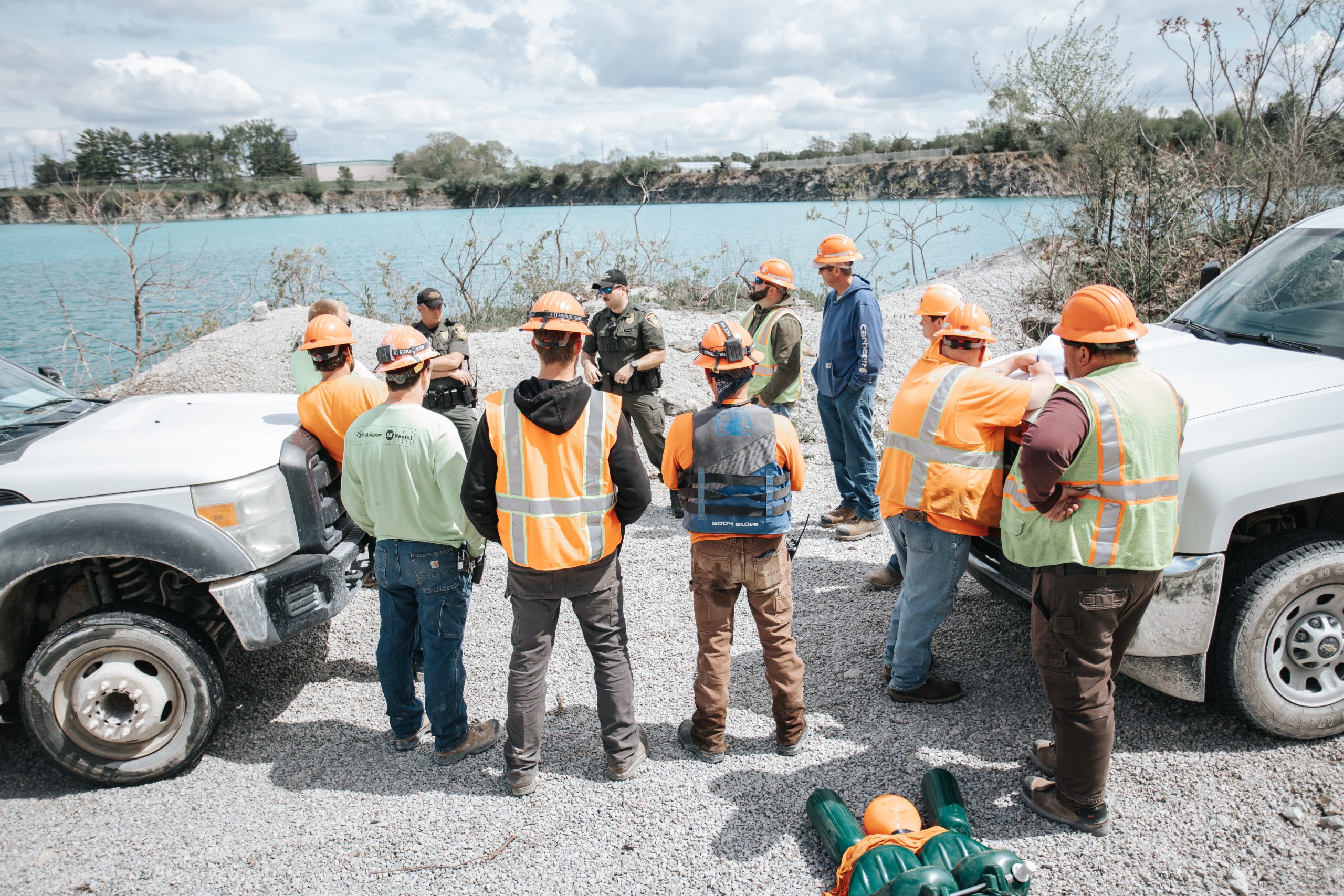US Aggregates supplies high quality materials for CCAP® in Morgan, Co.
Wednesday, July 12th, 2023

To the naked eye, an asphalt pavement looks like a dark, smooth, uniform, safe driving surface, but did you know that 92-96% of hot mix asphalt (HMA) is made up of aggregate? Aggregates are mineral components such as stone, gravel, or sand used to create the structural framework of HMA. These additives give our roads the strength they need to carry the weight of cars and semi-trucks every single day.
Even when the best aggregates and asphalt are used, roads don’t last forever. This is why the Heritage Research Group (HRG), Asphalt Materials Inc. (AMI), Milestone Contractors, and US Aggregates are all working together in a One HC+M project to figure out how to make the strongest, most sustainable, and cost-efficient asphalt mix in the Midwest region.
One solution the team has found that is not only cost efficient, but sustainable and durable is Cold-Construction Asphalt Pavement (CCAP®). CAAP® is a cold mix asphalt made from a blend of crushed aggregate and gelled asphalt. The gel-like structure branches out and connects to itself, allowing the material to maintain shape just like a honeycomb. This gives the material strength and flexibility surrounding the aggregate. The cold mix may be stockpiled for weeks or up to a few months and placed using a paver for road repair such as patching potholes or adding a new layer to low-volume roads.
AMI Indianapolis sales representative Nate Jenkins and his team recently worked with US Aggregate Plant Manager Rachel Lockhart to produce CCAP® for a project in Morgan County, Indiana. Leaders such as Rachel oversee the aggregate selection process, ensuring the right materials are chosen for each job.
“The aggregate selection (both size and quality) is extremely important for the successful binding action and overall performance of the cold mix patch after it is installed,” says Rachel. “If the mix is not completely dialed in with the correct sizes and proportions of aggregate, the pavement could have premature failures.”
The CM-150 gelled asphalt used in the Morgan County project was produced at the Indianapolis AMI plant, and an AMI pugmill mixed the modified asphalt with virgin limestone aggregate at US Aggregates’ 243 Quarry in Cloverdale, Indiana. The pugmill system allows a set amount of asphalt binder to combine with the aggregate. The mixing is performed at ambient temperatures, resulting in low emissions and reduced energy consumption, making CCAP® a very sustainable option for agencies.
Asphalt starts as a byproduct and can last decades because of its durability, especially when combined with high-quality aggregates. When the road needs to be reconstructed, the asphalt and aggregate that was originally used can be reused and reapplied. Sustainable project methods like CCAP® help recycling and reclamation and leverage processes that contribute to the circular economy.
Zoe Buhl and Madeline Freeman contributed to this article
Sources:
https://pavementinteractive.org/reference-desk/materials/aggregate/
https://www.fhwa.dot.gov/pavement/materials/hmec/pubs/module_d/lesson09_wbt.pdf








